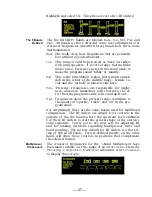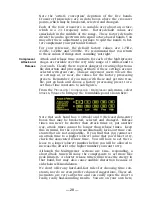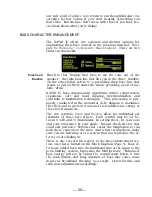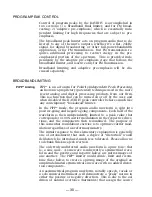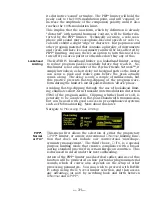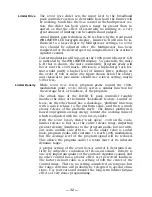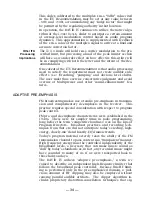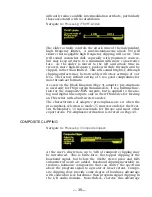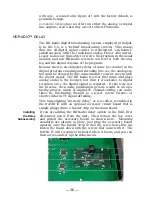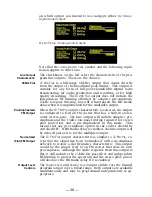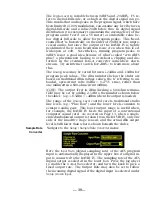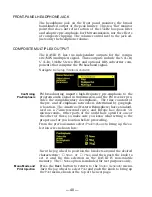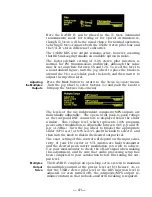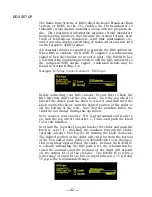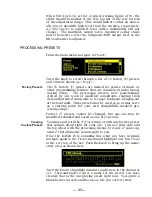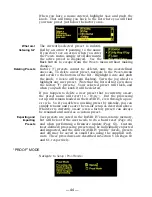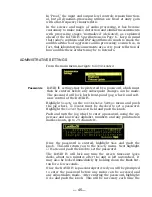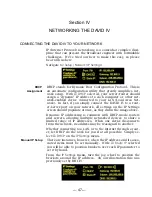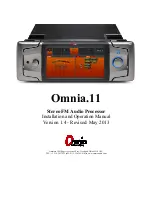
— 32 —
Limiter Drive
The
Limiter Drive
slider sets the input level to the broadband
peak controller section to determine how hard the limiter will
be working. Much like the
Drive
control in the Multipressor sec-
tion, this slider has been given a range far greater than re-
quired, so that the effect of essentially no limiting vs. a very
great amount of limiting can be sampled and judged.
Actual limiter gain reduction (G/R) is shown by the front-panel
WB LIMITER
LED bargraph display. Limiter G/R will also be in-
fluenced to a lesser degree by Multipressor settings, so
Limiter
Drive
should be adjusted after the Multipressor has been
roughed-in for the desired spectral composition of the station’s
signature sound.
Carrier modulation will top-out at the 100% point whenever G/R
is indicated by the
WB LIMITER
display. So, generally, the more
G/R that is shown, the more consistently program
peaks
will
hover near the 100% mark. Obviously, a high-energy rock for-
mat would justify a higher level of Limiter Drive, perhaps on
the order of
8dB
or more (the figure shown below the slider),
and classical or jazz music should use a lower setting, maybe
5dB
or less.
Limiter Density
While
Limiter Drive
forces program
peaks
toward the 100%-
modulation point,
Limiter Density
serves a similar function for
the
average
level, or loudness, of the program.
The attack time of the DAVID IV peak controller roughly
matches the delay of the limiter ‘lookahead’ feature. Limiter re-
lease, on the other hand, has a dual-slope, ‘platform’ function,
with a quick release to the platform value, and then a much
slower release of the platform itself. The limiter platform is
based on program average energy content, the working value of
which is adjusted with the
Limiter Density
slider.
With the
Limiter Density
slider ‘wide open,’
+3dB
on the scale,
limiter release is fast over the entire release range, imparting
greatest density (loudness) to the program audio, but not with-
out some audible side effects. As the slider value is scaled
back, program
peaks
will continue to reach 100% modulation,
but the
average
level of the program signal will be reduced.
This allows the program audio to retain more of its inherent
dynamic range.
A proper setting of the
Limiter Density
control is determined en-
tirely by subjective evaluation of the on-air sound. Density is
one very important quality of the station’s signature sound, and
no other control has a greater effect over perceived loudness.
The factory default value is a setting of
0dB
, the center of the
control range. There is no setting considered a wrong one, but
the range extremes will probably be relegated to special situa-
tions. Use your ears and consider the long-term
listener fatigue
effects of very dense programming.
Summary of Contents for 719
Page 1: ...DAVID IV FM Audio Broadcast Processor Installation User Guide www inovonicsbroadcast com ...
Page 2: ......
Page 4: ......
Page 70: ... 66 NOTES AND DOODLES ...










